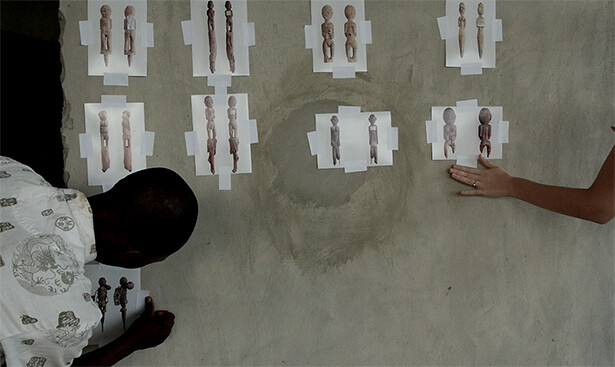Three exhibitions with different approaches show what contemporary presentations of non-European historical collections can look like.
March 26–October 18, 2015
Opening: March 25
Dahlem Museums, Staatliche Museen zu Berlin
Lansstraße 8
14195 Berlin
Germany
www.humboldt-lab.de
blog.humboldt-lab.de
dokumentation.humboldt-lab.de
With the launch of Probebühne 6, the Humboldt Lab Dahlem is entering the last round before the finale—this time with the emphasis on the question of the nature of the museum itself, as an institution of collecting and exhibiting, and the effect of all this on visitors.
Two projects—Object Biographies and Enchantment / Beauty Parlour—have as their theme the multifaceted history and present of the African collections in the Ethnologisches Museum (Ethnological Museum).
The apparently immobile objects that belong to the Ethnologisches Museum conceal their own fascinating biographies. The often little-known and sometimes problematic stories of how they were collected, transported, stored, categorized, cataloged, and exhibited are the subject of this exhibition. Curators Margareta von Oswald and Verena Rodatus present the journeys of selected objects from the Museum’s African collection: Where do the objects come from? How did they come to Berlin? How did they change hands—through barter, sale, looting, or as gifts? How were they finally received in Berlin, described, handled, and exhibited? Object Biographies takes a critical look at the museum itself, its practices and networks—and poses questions about common strategies for exhibiting the objects in the collection.
As “strangers” and “guests” (Kiswahili: wageni) to the experimental installation Enchantment / Beauty Parlour, visitors become an integral part of the mise en scène. They become immersed in an environment that is unknown to most of them: the production of female beauty and the weddings on the Swahili coast of East Africa. The Swahili aesthetic combines “inner” and “outer,” spiritual and physical beauty and appeals to all the senses synaesthetically. Can a sense of enchantment be successfully recreated by an immersion in scents, music, colors, shine, touch and movement, as the effect of beauty is described in Mombasa, Lamu or Zanzibar? The installation, by Dominic Huber, was created in collaboration with Paola Ivanov, Andrea Rostásy, Jasmin Mahazi, Maike Schimanowski and Maimuna Difini.
The focus of Music Listening is on inventory from the Department of Ethnomusicology, Media Technology and Berlin Phonogram Archive of the Ethnologisches Museum, which will be housed in a prominent exhibition space at the Humboldt-Forum. How can a sound archive with diverse content be exhibited and made audible and tangible, and how can sounds be connected with objects and image documentation in an appealing way? In a listening space, which has been equipped with state-of-the-art technology by the Technische Universität Berlin, a variety of program approaches are being tested. The spectrum ranges from an artistic take on archival sound recordings to the experience of North Indian Kathak dance or a Sufi ceremony to immersion in the sounds of a bustling North African city.
Further events organized as part of the Probebühne 6 will be announced in advance in the newsletter.
Overview
June 24: Opening of Probebühne 7 and final exhibition
July 2–3: Symposium, “Historical Collections and Contemporary Art: A discussion of curatorial strategies”
About Humboldt Lab Dahlem
For the past three years the Humboldt Lab Dahlem has been accompanying the Ethnologisches Museum (Ethnological Museum) and the Museum für Asiatische Kunst (Asian Art Museum) of the Staatlichen Museen zu Berlin (National Museums in Berlin) on their journey to become the Humboldt-Forum, and with its exhibitions, events and discussions under the Probebühne (rehearsal stage) title, it regularly provides inspiration and new impulses for the planning process. The following individuals, among others, have contributed to the first five editions since 2013: artists Waseem Ahmed, Yael Bartana, Theo Eshetu, Alexandra Pirici, Kirstine Roepstorff, Karin Sander, Simon Starling, Yuken Teruya and Zhao Zhao; architects Andreas Heller, Barbara Holzer and Tristan Kobler, raumlaborberlin; designer Konstantin Grcic; curators Nicola Lepp, Florian Malzacher and Angela Rosenberg as well as musician Robert Lippok. In the summer of 2015 a final exhibition as well as the last Probebühne will undertake a review of the collaborative experimental exhibition project by the Kulturstiftung des Bundes (German Federal Cultural Foundation) and the Stiftung Preußischer Kulturbesitz (Prussian Cultural Heritage Foundation).
Contact: [email protected]


